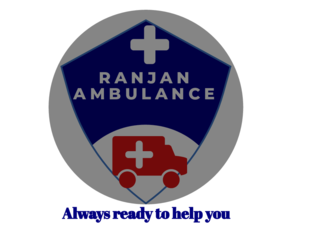Ambulance Service in Araria: Ensuring Timely and Effective Emergency Response
In Araria, a district nestled in the northern part of Bihar, India, the provision of ambulance services plays a crucial role in the healthcare infrastructure. As a predominantly rural district with diverse healthcare needs, the accessibility and efficiency of ambulance services are paramount in saving lives and ensuring timely medical interventions.
Healthcare Landscape in Araria
Araria district, bordered by Nepal to the north and the districts of Kishanganj to the east, Purnia to the west, and Supaul to the south, is known for its agricultural economy and a growing population. Like many rural areas in India, Araria faces challenges in healthcare accessibility due to infrastructural limitations and geographic spread. The district is home to several primary health centers (PHCs), community health centers (CHCs), and a district hospital, which collectively serve the healthcare needs of the population.
Importance of Ambulance Services
Ambulance services in Araria are vital due to several factors:
Geographical Challenges: Araria’s terrain, comprising rural areas and remote villages, poses challenges in accessing healthcare facilities swiftly. Ambulances act as lifelines, bridging the gap between patients and medical care.
Emergency Medical Response: Timely transportation to medical facilities during emergencies such as accidents, childbirth complications, heart attacks, and other critical conditions is facilitated by ambulance services. This quick response is often crucial in saving lives.
Healthcare Equity: Ambulance services contribute significantly to reducing healthcare disparities by ensuring that even those in remote areas have access to emergency medical transport, regardless of their socioeconomic status.
Types of Ambulance Services Available
In Araria, the ambulance services typically fall under two categories:
Basic Life Support (BLS) Ambulances: These ambulances are equipped to provide essential medical care during transportation. They are staffed with trained paramedics who can administer first aid, oxygen, and CPR if needed.
Advanced Life Support (ALS) Ambulances: ALS ambulances are equipped with advanced medical equipment such as cardiac monitors, ventilators, and medications. They are staffed with paramedics or emergency medical technicians (EMTs) who have specialized training in critical care.
Infrastructure and Operation
The infrastructure supporting ambulance services in Araria includes:
Ambulance Fleet: Managed by both government and private healthcare providers, the ambulance fleet includes vehicles suitable for the region’s terrain and capable of navigating rural roads.
Emergency Response Centers: These centers serve as communication hubs, receiving emergency calls and dispatching ambulances based on the severity and nature of the medical emergency.
Coordination with Healthcare Facilities: Ambulance services are closely coordinated with hospitals and healthcare centers to ensure seamless transfer of patients for further medical treatment.
Challenges and Solutions
Despite the critical role they play, ambulance services in Araria face several challenges:
Infrastructure Limitations: Poor road conditions in some areas can impede the timely arrival of ambulances, particularly during the monsoon season.
Awareness and Accessibility: Awareness among the population about when and how to access ambulance services during emergencies is crucial. Efforts are ongoing to educate communities about the importance of early intervention.
Funding and Maintenance: Ensuring a sustainable funding model for ambulance services and maintaining the fleet in good operational condition remain ongoing challenges.
To address these challenges, initiatives such as:
Improving Road Infrastructure: Collaborative efforts between local authorities and healthcare providers to improve road conditions, particularly during the monsoon season.
Community Education Programs: Conducting outreach programs to educate communities about the importance of timely medical intervention and how to access ambulance services.
Public-Private Partnerships: Engaging with private healthcare providers to augment the existing fleet of ambulances and improve service coverage.
Impact on Healthcare Outcomes
The impact of efficient ambulance services in Araria is profound:
Reduced Mortality: Timely access to medical care significantly reduces mortality rates associated with critical conditions and accidents.
Improved Maternal and Child Health: Prompt transportation during childbirth complications reduces maternal and neonatal mortality, contributing to improved health outcomes.
Emergency Preparedness: Strengthening emergency response capabilities enhances overall healthcare preparedness in the district.
Future Directions
Looking ahead, enhancing ambulance services in Araria involves:
Technology Integration: Incorporating GPS tracking and telemedicine capabilities to improve response times and enhance pre-hospital care.
Capacity Building: Training more paramedics and EMTs to handle advanced medical equipment and provide specialized care during transit.
Community Engagement: Continuing efforts to raise awareness about emergency medical services and encouraging community involvement in emergency preparedness.
Conclusion
In conclusion, ambulance services in Araria are not just about transportation; they are about bridging the gap between medical emergencies and life-saving care. As the district continues to evolve and grow, so too must its healthcare infrastructure, with ambulance services playing a pivotal role in ensuring that every individual, regardless of their location or circumstance, has access to timely and effective medical assistance. Through ongoing improvements and community engagement, Araria is poised to further enhance its emergency response capabilities and improve healthcare outcomes for its residents.

